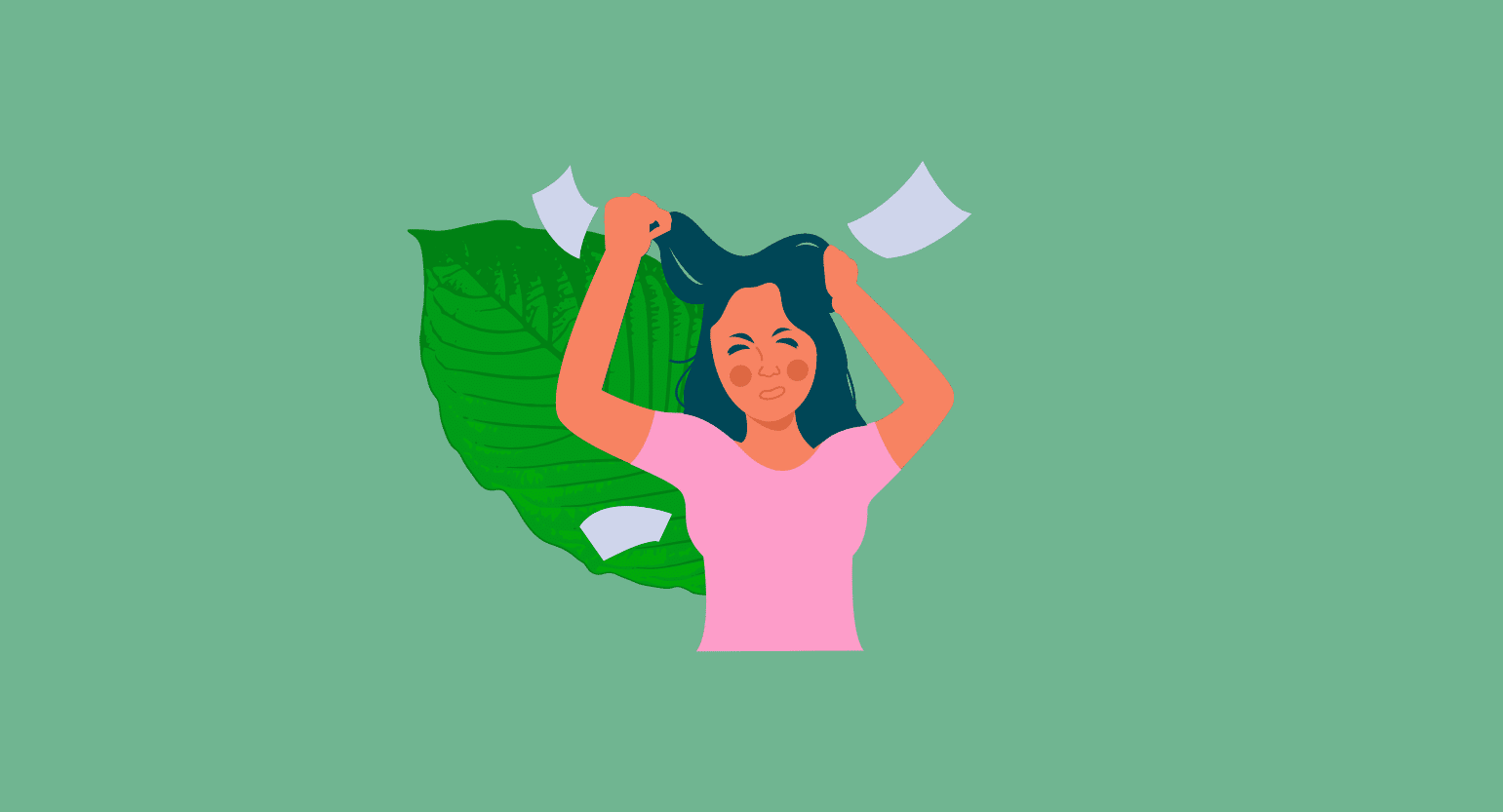A Bit About Kratom
Kratom (Mitragyna speciosa) has been a popular plant in Southeast Asia for thousands of years. Its traditional uses extend back for many millennia, and even today, it’s used mainly by laborers to help manage physical discomfort or provide additional energy during particularly grueling workdays.
It was also quite popular in Thailand because it helped people quit using opium. It remains popular for this purpose in North America and throughout Europe. It’s one of the best options for opioid withdrawal.
Kratom contains a number of different active compounds known as alkaloids, each with its own way of interacting with the human body. The combination of alkaloids in kratom is responsible for its various benefits and side effects.
The alkaloid content can change significantly depending on how the kratom is grown and processed, but mitragynine and 7-hydroxymitragynine are the primary ones. This has resulted in a sort of a labeling system that allows vendors and consumers to discern the effects that a particular strain will produce.
The three main kratom varieties (or strains) are red, green, and white kratom. The color indicates the degree of stimulation that you can expect from the strain, with white being the most stimulating and red being the most relaxing. Green provides somewhat of a balance between stimulation and relaxation.
Kratom Strains for Anxiety Relief
The best strains for fighting anxiety are generally relaxing in nature. Red strains are the most popular, followed by green strains or perhaps a mixture of red and green (sometimes referred to as yellow or gold).
White strains provide a more substantial boost of energy and focus and are not best for fighting anxiety. However, some people do find anxiety relief from white strains — more on that later.
Red Kratom for Anxiety
Red kratom strains are popular for pain relief, relaxation, and anxiety. These strains contain a higher concentration of certain alkaloids that produce relaxing and sedating benefits. This makes them a fantastic choice for people who need profound relief and don’t need to perform many physically exerting tasks throughout the day.
Typically, a red strain will help reduce anxiety, similar to conventional anti-anxiety medication. Anxiety often comes with racing thoughts, an elevated heartbeat, high blood pressure, and other uncomfortable symptoms that can be overwhelming.
Like an opioid, benzodiazepine, or a couple of shots of liquor, red kratom helps slow down the body’s physical and mental processes. Reducing such symptoms can eliminate the anxiety or make it more manageable.
Because the red strains are so relaxing and sedating, they can fight anxiety by flat-out knocking you out. While this is an avoidance technique and not necessarily recommended, sometimes you feel the need to push the “OFF” switch in a severe panic attack.
New users especially will find that red strains can be powerfully sedating, making it difficult to stay awake when using them. As you develop a tolerance, you’re less likely to find yourself overwhelmingly sedated but can still enjoy relief when using a red strain.
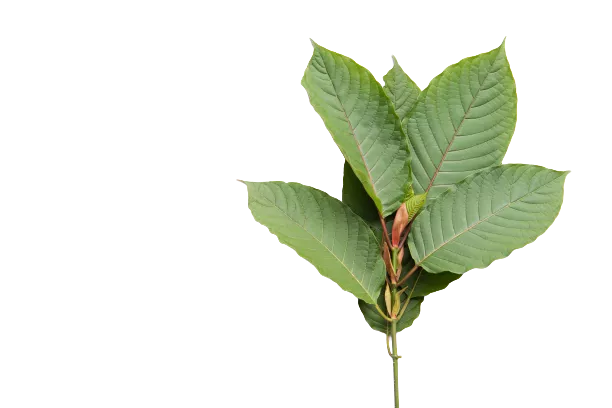
Green Strains for Anxiety
Green strains provide users with effects that land somewhere between those of a red or white strain. This means that they can be both stimulating and sedating. This is only possible because these contradictory effects occur at different times during the experience.
Generally, green strains start out energizing. You’ll experience a mood boost, increased focus, and improved physical energy. At this stage, the mood boost is most likely what will help to eliminate anxiety.
As the experience progresses and the stimulation starts to give way to relaxation and sedation, your anxiety will be quelled similarly to a red strain. After the energetic buzz wears off, you will feel pleasantly relaxed and may feel called to sleep.
However, not everybody finds that green strains help reduce anxiety. People who are especially sensitive to anxiety might find the initial stimulation a trigger for anxiety. Although green strains are not nearly as stimulating as white ones and therefore not as likely to contribute to anxiety, this is still something to be cautious of if you’re highly sensitive.
If you want to determine beforehand whether or not you’re at risk of developing kratom-induced anxiety, you could compare your experiences with coffee.
Many people prefer not to drink coffee because it makes them jittery and uncomfortable. Others can drink cup after cup of coffee without finding that it causes any anxiety at all!
If you’re a part of the latter group, it’s improbable that a green strain will cause anxiety during the burn. Even if coffee gives you the jitters, kratom provides a sort of ‘muffling’ effect that dims down any overstimulating effects.
This tampering effect is not unlike the l-theanine found in green tea, which muffles the stimulation from the caffeine. If you can drink green tea without becoming anxious, you can most likely handle green kratom.
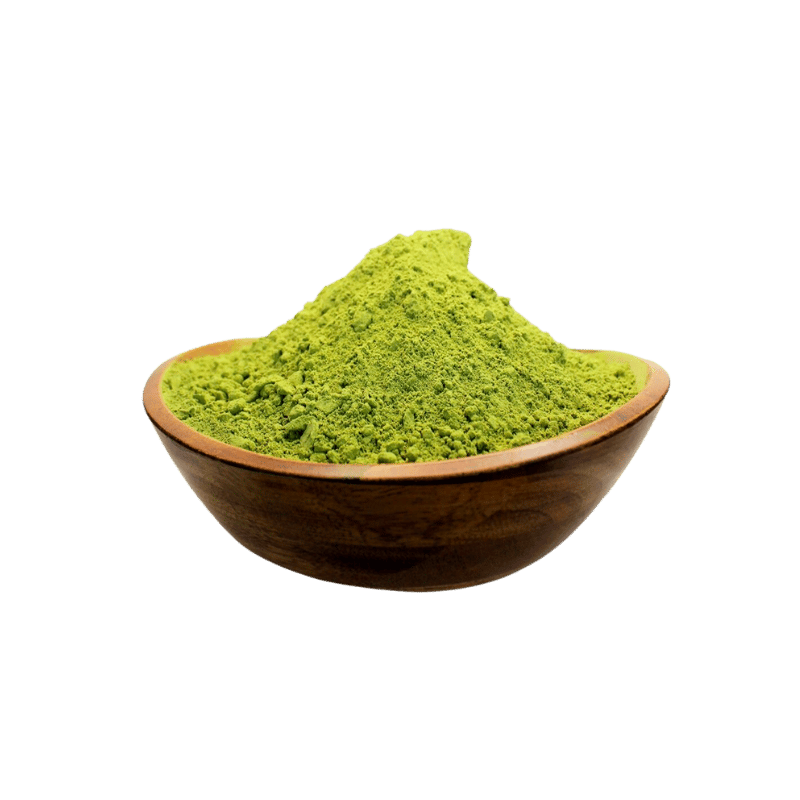
White Kratom Effects on Anxiety
You rarely see a white variety of kratom marketed for fighting anxiety. This is because white strains are stimulating through and through. However, this doesn’t mean they’re entirely ineffective for fighting anxiety.
White kratom provides a sharp sense of focus. Users find that whatever they’re doing when the kratom kicks in consumes all their attention.
On the other hand, anxiety is often characterized by wandering and uncontrolled thoughts and sensations. Distractions. Spontaneous and uncontrolled feelings and compulsions make a situation feel overwhelming. Sometimes, people find that the razor-sharp focus afforded by white kratom leaves little to no room for anxious thoughts to creep in.
White strains are also notable for producing a euphoric mood boost. This in itself can eliminate anxiety, especially social anxiety. Many people with social anxiety have found that white kratom makes them so euphoric that their inhibitions decrease to the point where they no longer focus on it.
However, these people do not necessarily constitute the majority in this case. Because white kratom lacks many relaxing alkaloids found in red and green strains, those sensitive to anxiety are more vulnerable to having it triggered by this particular type of kratom.
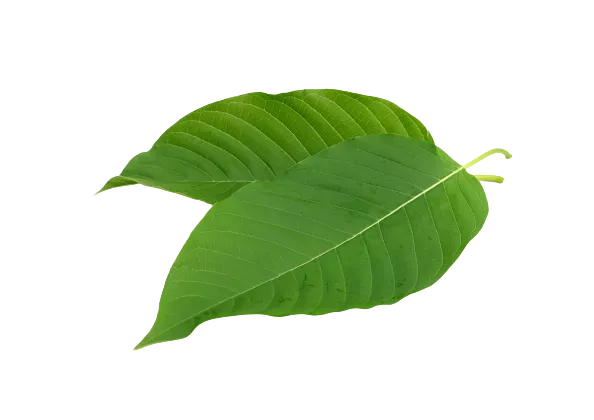
Is Anxiety a Side Effect of Kratom?
Some people have found that kratom can also cause anxiety as a side effect. This describes a different phenomenon than that which we’ve already described. It can also affect people who have never experienced anxiety in their lives before, making it a challenge to diagnose.
This anxiety can emerge after the initial effects of the kratom wear off, or it can result from the long-term, excessive use of kratom. It’s largely the result of the kratom plant’s interaction and buildup of various alkaloids.
Kratom contains a variety of different alkaloids. Some of these are known as agonists, and they stimulate specific systems in the body, like the opioid receptors, producing desirable sensations.
Other alkaloids are called antagonists. Antagonists do the opposite, activating the same systems in a sort of reverse way. Instead of producing a pleasant effect, they can create dysphoric and unpleasant feelings.
One might wonder why nature would include both types of alkaloids in a single plant or why antagonists even exist if all they do is provoke negative sensations.
Antagonist alkaloids are necessary for the maintenance of balance in the nervous system. If too many agonists are activated — for example, if someone drinking medicinal poppy tea ingests too much morphine, a potent agonist — then the effects of an antagonist can be useful for helping to reverse the effects of over-agonism (which, in this case, is an overdose).
Chemical antagonists, such as naloxone, are also used to reverse opioid overdoses.
The body also produces its own antagonists, such as dynorphin. Dynorphin is created when we sweat or go through vigorous exercise.
The initial discomfort associated with these sensations and the production of dynorphin has a down-regulating effect on the body’s natural opioid system. This means that you become slightly more sensitive to your natural endorphins for a time. This is what creates the runner’s high!
As far as kratom goes, the antagonists work as a failsafe that would ideally discourage people from becoming addicted or dependent on the plant.
The antagonists are generally less potent but longer-lasting than the agonists. Thus, the more kratom you use, the more chance these antagonist alkaloids will build up and produce these unwanted sensations, including anxiety, dysphoria, and confusion.
Kratom & Anxiety During the “Come-Down”
One might hesitate to call the after-effects of kratom a comedown. Some people are opposed to the term because it associates kratom with more dangerous recreational drugs. Others don’t like this term because it suggests a significant crash rather than the gentle easing-down that most responsible users experience.
On the other hand, those who use a lot of kratom will almost surely experience a crash. Compulsive kratom dosing usually results in a stronger comedown experience, whether you’re using it due to addiction or because you need it to manage chronic pain.
Because the antagonist alkaloids listed above are less effective, they won’t have much of an effect during the burn because the more potent agonist alkaloids, such as mitragynine, dominate them. The antagonists have a longer half-life than the pleasurable agonist alkaloids, so they remain active after the agonists have worn off.
See where this is going? Once the pleasant effects of kratom wear off, the unpleasant effects are all that’s left. For occasional users, this usually amounts to nothing more than a bit of lethargy or brain fog that can be written off as relaxation and a good excuse to go to bed.
However, these antagonistic effects can build up in chronic and compulsive users and become a force to be reckoned with. If you continue to dose as the initial effects wear off, you’re setting yourself up for a landslide of antagonistic discomfort — anxiety, dysphoria, lethargy, confusion, brain fog, and cravings for more kratom.

Avoiding Anxiety & Approaching Addiction
This produces anxiety that’s slightly different from what most people are used to. It’s a physically uncomfortable anxiousness that’s highly body-centered. It’s frequently accompanied by cognitive fog and a reluctance to socialize. Chest tightness and elevated blood pressure are two common physical adverse effects.
What goes up must come down. People with addictive personalities refuse to let things that have gone up fall down. Instead, they attempt to keep them elevated indefinitely. Hence, trying to avoid kratom-induced anxiety by compulsively using more kratom is one of the biggest reasons people develop a kratom addiction.
A wise kratom user will hold in mind that a comedown is a form of closure as their burn comes to a close. Embracing the subtle dulling of sensations that come with the after-effects of kratom allows one to appreciate the natural result of an enjoyable experience.
Others, however, will go to great lengths to avoid any discomfort whatsoever. Oblivious to the fact that these mildly uncomfortable feelings result from kratom clearing itself out of the body, they’ll gobble another teaspoon to stifle them.
Continuing to use kratom this way ensures that the user will develop a tolerance. This means they’ll have to consume larger doses of kratom. They consume more and more of the antagonist alkaloids as they do this.
This means that these unpleasant symptoms will become more substantial and more pervasive. Generally, they emerge slowly enough that people fail to relate them to the kratom, so their first instinct will be to take more kratom to thwart anxiety that they suspect is entirely unrelated.
Also see: Kratom Dosage Guide: How Much Kratom Should I Take?
Downregulation, Addiction & Lingering Anxiety
Once fully addicted, people may develop a constant, lingering sensation of anxiety and dysphoria that persists throughout the day until they take a dose of kratom. In serious cases, taking kratom doesn’t even get rid of it.
In this stage, several things can be contributing to anxiety.
Constantly bombarding your system with potent alkaloids can contribute to downregulation and upregulation processes. These terms describe your body’s attempt to balance out the many complicated chemical systems that it feels are under attack.
Doing this will desensitize all of the areas targeted by kratom: the dopamine system, the serotonin system, and the opioid system, to name a few. The result of this is that people will no longer be receptive to the usual amount of brain chemicals they produce on their own.
Since dopamine and serotonin are heavily associated with mood and anxiety, downregulating these areas can cause people to experience symptoms of neurotransmitter deficiencies in their daily lives: lack of focus, anxiety, depression, decreased coordination, appetite issues, and so on.
Sadly, this cycle can continue indefinitely until the user recognizes the relationship between kratom abuse and the symptoms.
Unfortunately, and as you can see, the mechanisms by which kratom causes anxiety are relatively complex. Most vendors aren’t well-equipped to explain these issues to their customers, and most customers can’t be bothered to study pharmacology so they can eat some herbs. What they can warn their customers about, however, is kratom addiction and withdrawal.
Suggested Reading: How Long Should I Wait Between Kratom Doses?
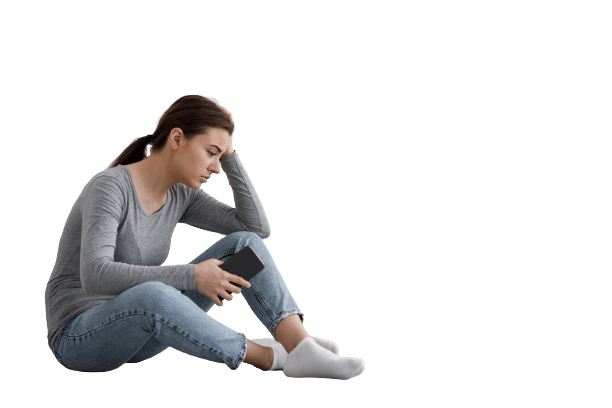
Anxiety As a Withdrawal Symptom
If you have used enough kratom for a long enough period to develop a physical dependence, you will experience withdrawal symptoms when you try to stop using it.
Many of these withdrawal symptoms result from the upregulation and downregulation processes that we described earlier. As your body attempts to readjust to life without kratom, you will have to struggle through a few days or weeks of uncomfortable symptoms, one of which is anxiety.
Anxiety as a withdrawal symptom can be of various types. Most people find a violent resurgence of any anxiety that they were initially hoping to manage with kratom. Others may notice the heavy, body-centered anxiety described earlier — although this tends to fade quite quickly as the kratom leaves the body.
Psychological withdrawal symptoms can be somewhat persistent, even after the initial physical withdrawal symptoms have subsided. Post-acute withdrawal syndrome (PAWS) describes a collection of psychological symptoms that may follow users for several weeks or months after they’ve stopped using a substance.
Managing Kratom Anxiety: Harm Reduction, Herbs, & Good Health
The best way for you to manage anxiety caused by kratom is to take less kratom! Since this type of anxiety is usually the result of a buildup of unwanted kratom alkaloids, it’s easy to see how reducing your dosage could reduce anxiety.
Kratom is one of the few herbal supplements that can be enjoyed by following the “less is more” principle. Because kratom’s stimulating, mood-boosting, and other positive energy effects are more evident in lower dosages, users can benefit from a unique maintenance technique that doesn’t work with other substances.
When the favorable effects start to fade, people usually have to take a significant break before the enjoyable effects can return, not so with kratom. You can reduce your dose if you notice that undesirable effects are beginning to dominate.
See what happens if you cut your dose in half or three quarters. Intuitively, it will feel wrong — “how could taking less possibly make for a better burn?” — but give it a shot; don’t expect to be blown out of the park, and you’ll probably be pleasantly surprised.
Many users have found that dropping their dose is just as effective as it would be to taper slowly down to their initial dose. This dramatically reduces tolerance and some of the unpleasant side effects like anxiety.
Taking Other Herbal Supplements
Many users choose to take additional herbal supplements to combat the anxiety caused by kratom. This is generally not recommended. Adding more supplements into the mix to avoid certain side effects is treading a dangerously thin line towards addiction.
Side effects are nature’s way of telling you that your body doesn’t agree with the amount or type of drug you’re taking. Suppressing these side effects with other herbs will not render your body immune to them. It will, however, allow you to become more reliant on kratom (rather than minimizing your use as the emerging adverse effects should advise you to do).
However, there are a couple of legitimate cases where someone might want to use herbal supplements to help manage kratom-induced anxiety.
- Someone with an active kratom addiction — those using it for chronic pain, for example — may find the anxiety to be a necessary evil that accompanies their medicine. Learning how to manage it is an effective way to help increase their overall quality of life.
- People who wish to stop using kratom may be interested in different ways to manage the anxiety during withdrawal.
- If you’re highly susceptible to anxiety but find kratom helps you with certain conditions, you may understandably want to co-administer kratom with another herbal anxiolytic.
Many other herbal supplements can help manage anxiety. In fact, some of these may actually be more useful than kratom if you’re only trying to treat your anxiety.
Most pharmaceutical anxiety drugs work by stimulating the GABA system in the brain. Kratom doesn’t have much activity at the GABA site; instead, it works to fight anxiety indirectly or by stimulating the dopamine and serotonin channels. Several other herbs target GABA effectively, though.
Passionflower, valerian root, and kava are all fantastic GABAergic herbs that are great for helping to fight anxiety as well as to promote relaxation and fight insomnia. Of these, kava is most likely to be habit-forming.
However, kava exhibits the unique property of building up a reverse tolerance. The longer that you use it, the more effective it will become! This means you can use progressively smaller doses to become more familiar with the plant.
A great way to holistically manage anxiety is to cycle between these herbs and participate in some of the exercise routines and lifestyle choices listed below. It can be helpful to cycle between these supplements and kratom not to develop a dependence on any individual herb.
Meditation & Yoga
Meditation has been used for thousands of years to help people reduce stress, improve focus and mental clarity, and increase overall well-being. Science has discovered that meditation can directly influence the GABA system, thereby triggering a neurochemical response that actually decreases anxiety [1].
Having a meditation or yoga session in the morning before using kratom can profoundly influence the experience of your burn. Many users have found that doing a few sets of Sun Salutations or other yogic postures provides enough grounding and relief to start their day without even needing to take their kratom.
Eating Healthy & Staying Hydrated
Don’t underestimate the power of a healthy diet and hydration on your mental health. Nutrients that are especially important for managing anxiety include magnesium and the B vitamins.
When using kratom, it’s also imperative to drink more water than you usually would since kratom is a strong diuretic. It’ll make you pee a lot, and even if you don’t immediately feel dehydrated, the symptoms of fluid loss will catch up to you.
Dehydration can slow down the function of the brain and lead to numerous cognitive symptoms, including anxiety and brain fog. Try to drink beverages that replenish your electrolytes, or make your own by mixing sea salt with a bit of sugar, some lemon juice, and some potassium sorbate if you have it. Or drink coconut water!
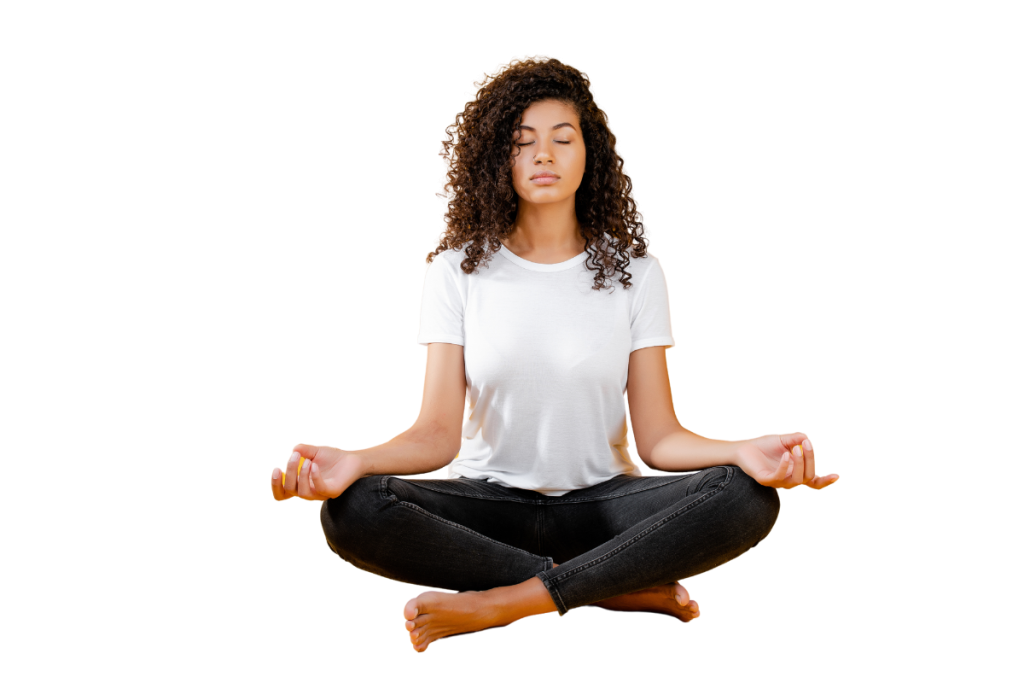
Final Thoughts on Kratom & Anxiety
Kratom is a powerful herbal supplement that’s remained popular for centuries. People often use kratom to help manage anxiety. As long as they do so responsibly, kratom can be an effective (albeit temporary) solution for certain kinds of anxiety.
However, those who are reckless with their usage may find that their kratom starts to cause anxiety. This results from a buildup of antagonist alkaloids and your body’s response to excessive consumption of a potent herb.
In either case, this is simply another reminder to be responsible with your usage. Kratom-induced anxiety will not be permanent and should fade away within hours or days, depending on how strong your habit was.
- Krishnakumar, D., Hamblin, M. R., & Lakshmanan, S. (2015). Meditation and yoga can modulate brain mechanisms that affect behavior and anxiety-A modern scientific perspective. Ancient science, 2(1), 13.

